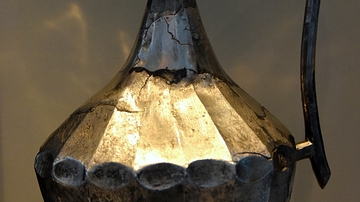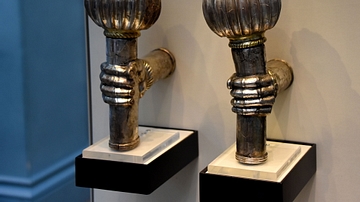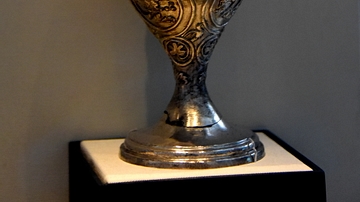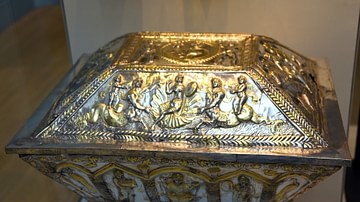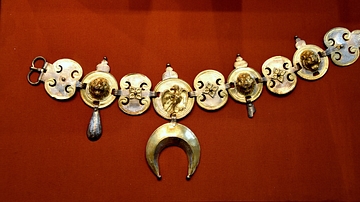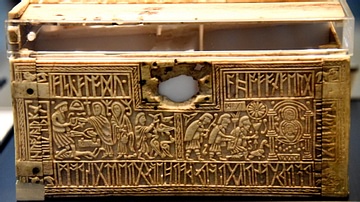Illustration
This elaborate cosmetics box, suspended on three chains, holds five small canisters for perfumes and unguents. The outside is decorated with images of eight of the nine classical Muses. A 9th figure on the top of the casket may be the final Muse, but she lacks any identifying object or the feathered headdress worn by the others. Instead, she may be the portrait of the casket's owner. The images of the Muses would have flattered the casket's owner by emphasizing her knowledge of classical arts, which continued to be the height of educated sophistication among the Christian elite during the Late Roman Period. Part of the Esquiline Treasure, which was discovered in the year 1793 CE, at the foot of the Esquiline Hill, Rome, Italy. Circa 330-370 CE. From Rome. (The British Museum, London).
About the Author
Cite This Work
APA Style
Amin, O. S. M. (2016, October 06). The Muse Casket from the Esquiline Treasure. World History Encyclopedia. Retrieved from https://www.worldhistory.org/image/5765/the-muse-casket-from-the-esquiline-treasure/
Chicago Style
Amin, Osama Shukir Muhammed. "The Muse Casket from the Esquiline Treasure." World History Encyclopedia. Last modified October 06, 2016. https://www.worldhistory.org/image/5765/the-muse-casket-from-the-esquiline-treasure/.
MLA Style
Amin, Osama Shukir Muhammed. "The Muse Casket from the Esquiline Treasure." World History Encyclopedia. World History Encyclopedia, 06 Oct 2016. Web. 30 Mar 2025.



